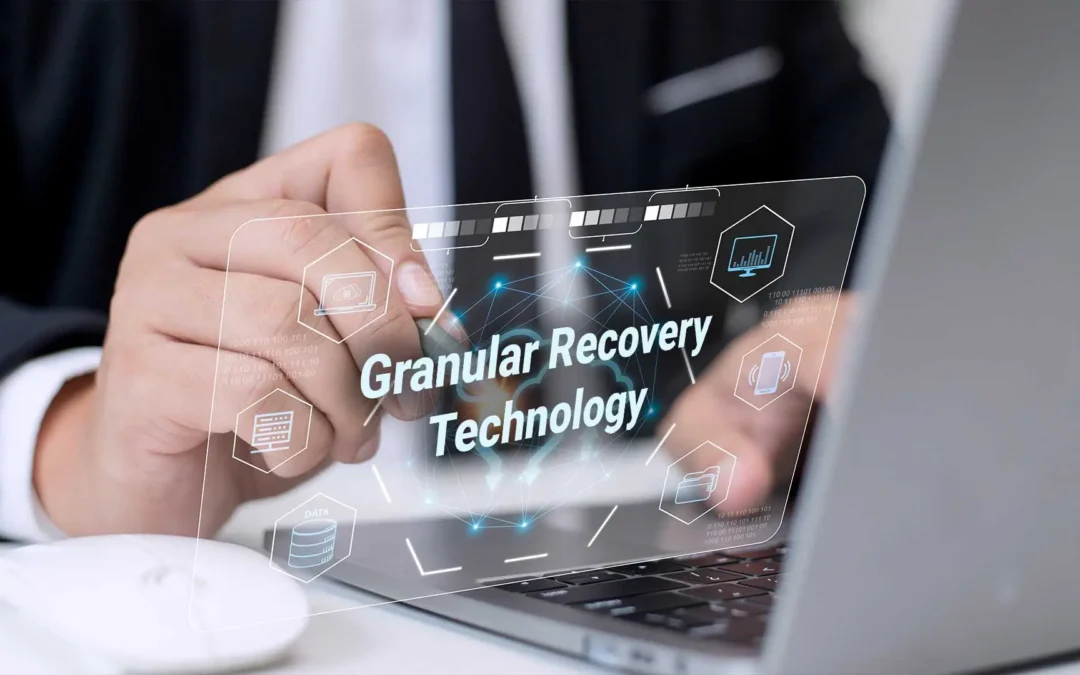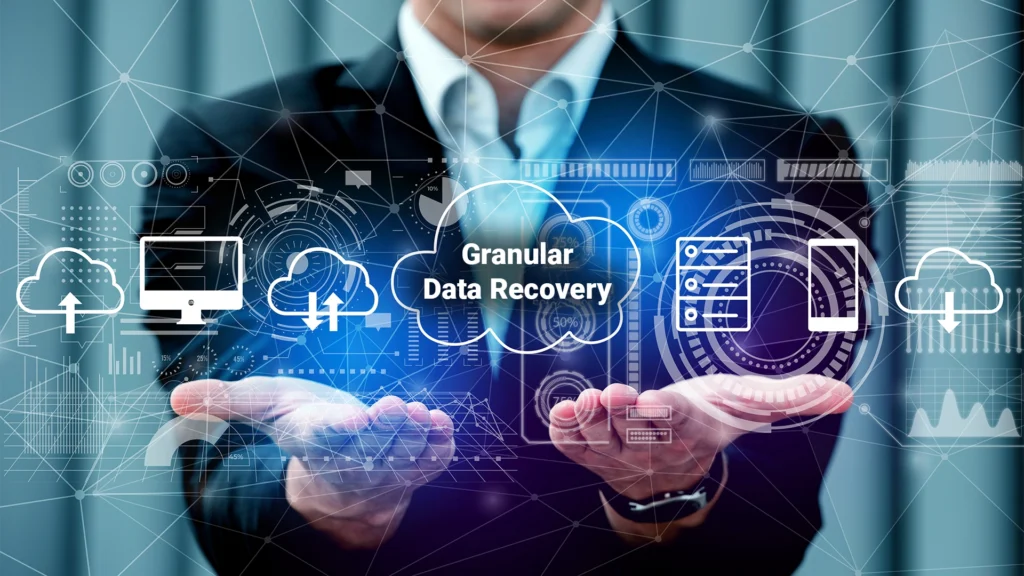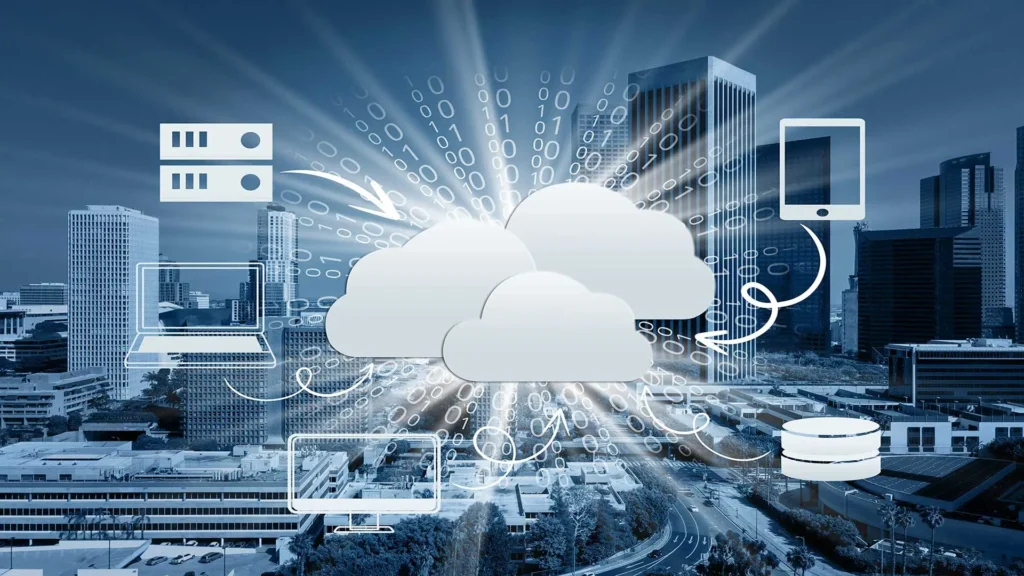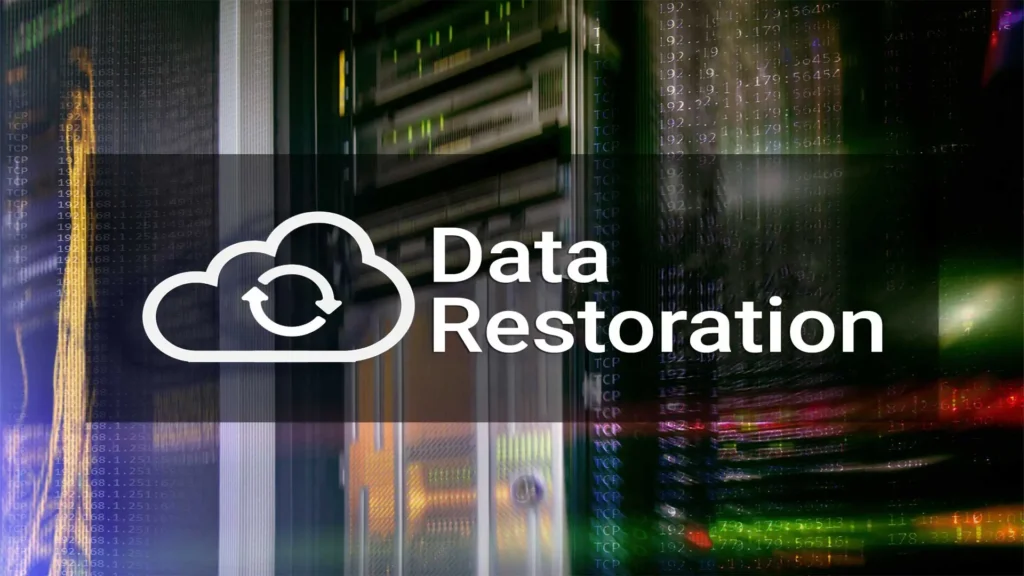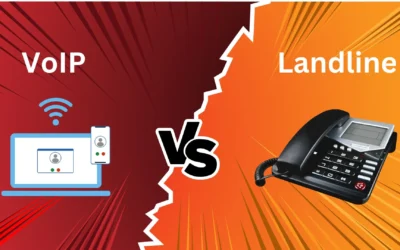In today’s data-driven world, information is the lifeblood of organizations. From small businesses to large enterprises, data is the foundation of operations, decision-making, and strategy. With the increasing reliance on digital systems, the need to protect and recover this data has become more critical than ever. Enter Granular Recovery Technology—a term that has been gaining traction in the IT and data management industries. But what is granular recovery technology, and why is it becoming such a vital tool for businesses and IT professionals?
In this comprehensive guide, we will explore what granular recovery technology is, how it works, and the benefits it offers over traditional recovery methods. We will also compare granular recovery to other data recovery solutions, discuss its challenges, and look at what the future holds for this innovative technology. By the end of this article, you’ll have a clear understanding of why granular recovery technology is a game-changer in the world of data recovery and how it can benefit your organization.
What is Granular Recovery Technology?
Granular Recovery Technology is a sophisticated data recovery approach that allows for the precise restoration of individual items, files, or components within a larger dataset. Unlike traditional recovery methods that often require restoring an entire system, database, or application, granular recovery targets specific elements, making the process faster, more efficient, and less resource-intensive.
In essence, granular recovery technology offers a more refined and targeted solution to data recovery, ensuring that only the necessary data is restored without the need to go through the entire data backup or system. This capability is particularly valuable in environments where time, storage space, and processing power are at a premium.
Let’s break down the concept further:
Targeted Data Recovery: Granular recovery allows users to restore exactly what they need—whether it’s a single email from an Exchange server, a specific document from a SharePoint library, or an individual record from a database. This precision minimizes the amount of data that needs to be processed and restored, reducing the time and resources required for recovery.
Efficiency in Action: Because granular recovery focuses on specific items, it significantly reduces the time needed to complete the recovery process. Traditional recovery methods often involve restoring large volumes of data, much of which may not be needed. Granular recovery eliminates this inefficiency by restoring only the relevant data.
Optimized Storage Use: By only restoring necessary components, granular recovery helps manage storage more effectively. This optimization not only saves storage space but also reduces the overall cost of storage, making it a more cost-effective solution.
Versatility Across Platforms: Granular recovery technology is not limited to a single type of data or platform. It can be applied across various systems, including virtual machines, email servers, databases, and cloud environments. This versatility makes it a valuable tool for IT professionals managing diverse data environments.
Reduced Risk: Traditional recovery methods can sometimes lead to data loss or corruption, especially when restoring large datasets. Granular recovery minimizes this risk by targeting specific items, which are easier to verify and restore successfully.
In summary, granular recovery technology is about precision, efficiency, and versatility—offering a smarter, more focused approach to data recovery that meets the needs of modern organizations.
How Does Granular Recovery Technology Work?
Understanding the granular recovery work process is key to appreciating its benefits. The process involves several steps designed for precise and efficient data recovery:
Data Identification: The first step is identifying the specific data to be restored, whether it’s a file, email, or database record. Advanced search and indexing tools help locate these items quickly, allowing users to filter and select exactly what they need to recover.
Selective Extraction: Once identified, the selected data is extracted without the overhead of a full system recovery. This focused extraction minimizes system impact, reduces recovery time, and requires less processing power and storage.
Reintegration: The extracted data is then reintegrated into the system, such as restoring an email to its original mailbox or placing a document back in its folder. This seamless process maintains the integrity of the system, ensuring the data is immediately usable.
Verification and Validation: After reintegration, the recovery is verified to ensure success. Automated and manual validation processes check that the restored items are intact and functional, adding reliability to the recovery.
Final Deployment: The verified data is then deployed back into the production environment, with minimal downtime. This step ensures the restored data is ready for use, allowing systems to get back online quickly.
Benefits of Granular Recovery Technology
Granular recovery technology offers several key advantages that make it a top choice for organizations:
Time Efficiency
Faster Recovery: Granular recovery allows IT teams to quickly restore specific data without waiting for full system recoveries, which is crucial in time-sensitive situations.
Reduced Downtime: By focusing on essential data, systems can be back online faster, minimizing the impact on business operations.
Cost Savings
Lower Storage Costs: Restoring only necessary data reduces storage space requirements, leading to cost savings.
Reduced Processing Costs: Granular recovery’s efficiency also means lower processing power demands, making it a budget-friendly option.
Improved Data Management
Efficient Organization: By recovering only relevant items, organizations can maintain cleaner, more organized data systems.
Better Compliance: Granular recovery enables precise restoration, helping businesses meet regulatory requirements without unnecessary data restoration.
Flexibility and Versatility
Multi-Platform Support: It works across various platforms, including virtual machines, databases, and cloud environments.
Adaptable to Different Data Types: This technology is suitable for a wide range of data, making it ideal for complex recovery needs.
Lower Risk of Data Loss
Minimized Data Loss: Focusing on specific items reduces the risk of data loss or corruption.
Improved Reliability: Built-in validation processes ensure successful and reliable recoveries.
Comparing Granular Recovery Technology With Other Data Recovery Methods
When it comes to data recovery, one size does not fit all. Different scenarios require different approaches, and understanding the differences between granular recovery technology and more traditional methods is key to making the right choice. Let’s explore granular vs traditional recovery approaches.
1. Scope of Recovery
Traditional Recovery: Traditional data recovery methods typically involve restoring entire systems, databases, or applications. This means recovering a vast amount of data, much of which may not be needed.
Granular Recovery: Granular recovery, on the other hand, focuses on specific items or components, allowing for a more targeted and efficient recovery process. This makes it ideal for situations where only a small amount of data needs to be restored.
2. Speed
Traditional Recovery: Because it often involves large-scale data restoration, traditional recovery can be time-consuming, especially for extensive systems. This can result in significant downtime, which can be costly for businesses.
Granular Recovery: Granular recovery is designed to be faster by focusing only on the data that needs to be restored. This targeted approach can significantly reduce the time required for recovery, minimizing downtime and allowing systems to be back online faster.
3. Resource Utilization
Traditional Recovery: Traditional recovery methods require significant resources, including storage space, processing power, and time. This can put a strain on IT infrastructure, especially in environments with limited resources.
Granular Recovery: Granular recovery uses fewer resources by only restoring selected items. This makes it a more resource-efficient option, reducing the burden on IT infrastructure and allowing for faster, more efficient recoveries.
4. Risk of Data Loss
Traditional Recovery: The risk of data loss or corruption is higher with traditional recovery methods, especially when restoring large volumes of data. If something goes wrong during the recovery process, it can be difficult to identify and fix the issue.
Granular Recovery: Granular recovery minimizes this risk by focusing on specific items, which are often easier to verify and restore successfully. This reduces the likelihood of data loss or corruption during the recovery process.
5. Use Case
Traditional Recovery: Traditional recovery methods are best suited for situations where a full system restore is necessary, such as after a catastrophic failure. They are also useful in environments where downtime is not a critical concern.
Granular Recovery: Granular recovery is ideal for less severe scenarios where only specific data needs to be restored, such as retrieving a deleted email or document. It is also useful in environments where minimizing downtime and resource usage is a priority.
In essence, choosing granular recovery over traditional methods often boils down to the specific needs of the situation. For many organizations, the speed, efficiency, and precision of granular recovery make it the preferred choice.
How to Choose Between Traditional Recovery and Granular Recovery
Deciding between traditional recovery and granular recovery isn’t always straightforward. The right choice depends on various factors, including the type of data loss, the resources available, and the urgency of the recovery. Here’s a guide to help you make the right choice:
1. Assess the Data Loss Scenario
Widespread Data Loss: If you’re dealing with widespread data loss, such as a full system failure or a catastrophic event, traditional recovery might be necessary. This method is designed to handle large-scale recoveries and can restore entire systems to their previous state.
Targeted Data Loss: For more targeted issues, such as the loss of specific files, emails, or records, granular recovery is the way to go. This method allows you to quickly and efficiently restore only the data you need, without the overhead of a full system recovery.
2. Consider the Time Constraints
Time-Sensitive Recoveries: If you need a quick fix and the data loss is minimal, granular recovery is faster and more efficient. It allows you to quickly restore the data you need, minimizing downtime and getting systems back online faster.
Less Urgent Recoveries: If time isn’t a critical factor but the data loss is extensive, traditional recovery may be more appropriate. This method is designed to handle large-scale recoveries and can restore entire systems to their previous state, even if it takes longer.
3. Evaluate Resource Availability
Limited Resources: If resources are limited, granular recovery’s focused approach is less demanding on storage and processing power. This makes it a more resource-efficient option, allowing you to quickly restore the data you need without putting a strain on your IT infrastructure.
Ample Resources: If you have ample resources and the situation demands it, traditional recovery can handle larger-scale restorations. This method is designed to handle large-scale recoveries and can restore entire systems to their previous state, even if it requires more resources.
4. Think About Long-Term Needs
Ongoing Data Management: For ongoing data management and frequent small-scale recoveries, granular recovery is often more sustainable. This method allows you to quickly and efficiently restore only the data you need, without the overhead of a full system recovery.
Large-Scale Failures: If your environment is prone to large-scale failures, having a traditional recovery plan in place might be wise. This method is designed to handle large-scale recoveries and can restore entire systems to their previous state, even in the event of a catastrophic failure.
5. Consider Compliance Requirements
Regulatory Compliance: For industries with strict compliance requirements, granular recovery provides the precision needed to meet these standards without unnecessary data restoration. This method allows you to quickly and efficiently restore only the data you need, ensuring that you meet regulatory requirements without overhauling entire systems.
Ultimately, choosing granular recovery or traditional recovery should be based on the specific context of the data loss, the resources available, and the urgency of the recovery.
Challenges and Considerations of Granular Recovery Technology
While granular recovery technology offers many advantages, it’s important to recognize its challenges to ensure effective implementation.
Complexity
Granular recovery can be more complex than traditional methods, requiring advanced tools and processes.
Technical Expertise: Implementing granular recovery demands higher technical skills, which may necessitate additional training and resources for IT teams.
Configuration Challenges: Setting up granular recovery can be complicated, especially in diverse environments, making it harder to manage.
Compatibility Issues
Not all systems are fully compatible with granular recovery tools, which can limit their effectiveness.
Limited Compatibility: Legacy systems or proprietary formats might not work seamlessly with granular recovery tools, requiring customization.
Vendor Lock-In: Some tools may tie you to specific vendors, reducing flexibility and increasing dependency.
Cost
While cost-effective in the long run, the initial setup and licensing can be expensive.
High Initial Costs: The upfront investment for purchasing and licensing granular recovery tools can be significant, particularly in complex environments.
Ongoing Maintenance: Regular maintenance and support add to the overall cost and must be considered in the decision-making process.
Training Requirements
The specialized nature of granular recovery often requires additional training for IT staff.
Training Costs: Training staff on granular recovery tools can be both time-consuming and costly.
Ongoing Education: As technology evolves, ongoing training will be necessary to keep up with new developments.
Potential for Over-Reliance
Over-reliance on granular recovery could lead to complacency in other areas, like regular backups.
Complacency Risks: While effective for specific scenarios, granular recovery shouldn’t replace regular full-system backups, as over-reliance could increase the risk of data loss.
Balanced Approach: Combining granular recovery with traditional backups ensures comprehensive data protection.
Limited Use Cases
Granular recovery isn’t always the best solution, especially in cases of total system failure.
Use Case Limitations: It’s most effective for specific recoveries, but full-system failures may still require traditional methods.
Complementary Solution: Granular recovery should complement, not replace, traditional methods to cover a range of recovery scenarios.
Future of Granular Recovery Technology
The future of granular recovery technology is bright as data management continues to evolve. As organizations increasingly rely on digital systems, the demand for precise and efficient data recovery solutions will rise. Here’s a glimpse into what’s ahead:
AI and Automation:
AI-Powered Search: AI will enhance the identification and recovery of specific items from large datasets, boosting efficiency and accuracy.
Automated Recovery: Automation will streamline recovery processes, reducing the need for manual intervention and simplifying large-scale operations.
Enhanced Compatibility:
Cross-Platform Support: Expect broader support across various platforms and data types, making it easier to implement in diverse environments.
Improved Integration: Better integration with existing IT systems will resolve compatibility issues, facilitating easier deployment.
Increased Adoption:
Growing Demand: The benefits of granular recovery will drive higher adoption, especially in industries where data precision is crucial.
Market Expansion: The market will grow, with new vendors and products entering to meet the increasing demand.
Cloud Integration:
Cloud-Native Solutions: As data shifts to the cloud, more solutions will be designed specifically for cloud environments.
Improved Cloud Compatibility: Enhanced cloud compatibility will make granular recovery more accessible and easier to implement.
Advanced Security:
Enhanced Protection: Expect advanced security features like encryption and secure access controls to protect recovered data.
Improved Compliance: Tools will evolve to help organizations meet stricter data protection regulations.
Cost-Effectiveness:
Lower Costs: As competition grows, the cost of implementing granular recovery will decrease, making it more accessible.
Scalability: Future solutions will offer more scalability, catering to organizations with different recovery needs and budgets.
To Wrap Things Up
In a world where data is one of the most valuable assets, understanding what is granular recovery technology is crucial for businesses and individuals alike. This advanced technology offers a targeted, efficient, and versatile approach to data recovery, making it an indispensable tool in modern data management. While it comes with its own set of challenges, the benefits often outweigh the drawbacks, especially for organizations that require precise and rapid data restoration.
As we look to the future, granular recovery technology is poised to become even more integral to our data management strategies, driven by advancements in AI, automation, and cloud integration. Whether you’re deciding between traditional recovery methods or considering the switch to granular recovery, this technology offers a compelling solution for safeguarding your most valuable data. By leveraging the power of granular recovery technology, organizations can ensure that they are prepared for any data loss scenario, with the ability to quickly and efficiently restore the data that matters most.

